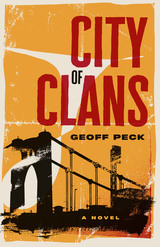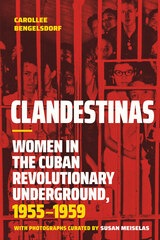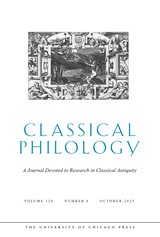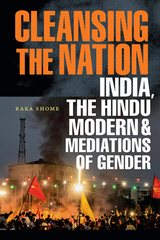4 books about Unlocking
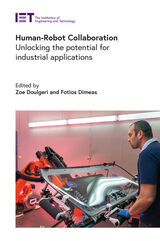
Human-Robot Collaboration
Unlocking the potential for industrial applications
Zoe Doulgeri
The Institution of Engineering and Technology, 2023
Human-robot collaboration (HRC) is a widely studied research topic that investigates how humans and robots can work together and achieve a common goal. Over the past few years, HRC has created exciting new applications for robots that can revolutionize manufacturing and introduce them to entirely different domains such as healthcare and agriculture. It is an interdisciplinary research area comprising robotics, artificial intelligence, design and cognitive sciences.
[more]
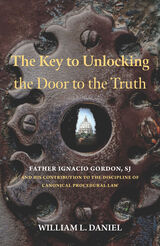
The Key to Unlocking the Door to the Truth
Father Ignacio Gordon, SJ, and His Contribution to the Discipline of Canonical Procedural Law
William L. Daniel
Catholic University of America Press, 2022
Father Ignacio Gordon, SJ, taught canon law (the Catholic Church’s law) from 1960 until 1985 at the Pontifical Gregorian University in Rome, with a concentration on procedural law, or the laws on trials. By all testimonies, he was outstanding for the clarity of his teaching, his humble affection for his students, his indefatigable and hidden service to the Apostolic See, and his priestly zeal. Notable among his endeavors was an educational initiative for the ongoing formation of judges and other ministers of justice in ecclesiastical tribunals. In his teaching, he stressed the ecclesial importance and supernatural implications of procedural law in general, and the indispensability of the judicial protection of marriage in particular. Special efforts were made to make procedural law understandable to his students and to canonists in general, at a time when the Church was celebrating and implementing the teachings of the Second Vatican Ecumenical Council, as a result of which her law was undergoing a major revision. Father Gordon taught from the consistent canonical tradition, while also laying bare the latest developments in law and jurisprudence. He taught the entirety of the law on trials, producing numerous scholarly works on questions both timeless and new, giving marked emphasis to the problem of the excessive length of trials and the causes of delayed justice. An area of his particular attention and dedication was the Supreme Tribunal of the Apostolic Signatura—of which he was a consultor (referendary and later votans)—including both its proper law and its history. This history displayed, in part, why that Tribunal was the natural one to function as the supreme administrative tribunal of the Church. Father Gordon’s contribution to the question of ecclesiastical administrative justice was among those leading the novel and dynamic discussion about it in the 1960s and 1970s.
[more]
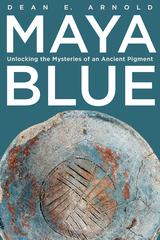
Maya Blue
Unlocking the Mysteries of an Ancient Pigment
Dean E. Arnold
University Press of Colorado, 2025
One of the great technological achievements of the ancient Maya, Maya Blue is one the world’s most unusual ancient pigments. In Maya Blue, Dean E. Arnold offers a comprehensive history of its study for almost a century, filled with personal anecdotes drawn from his decades of work uncovering the Maya knowledge of its constituents, its ancient sources, and how it was made—including previously unknown methods. The book presents a fresh holistic perspective that documents these discoveries and the scientific process that led to them and provides testable hypotheses about how the pigment and the technology used to make it moved throughout Mesoamerica.
Combining the organic dye indigo and the inorganic clay mineral palygorskite in a highly stable chemical hybrid that, unlike indigo, resists attacks by acids, alkalines, and organic solvents and endures without fading, Maya Blue has a rich blue color that has survived for centuries in one of the world’s harshest climates. First used at the site of Calakmul in the tropical forest of southern Mexico during the Late Preclassic period, the Maya’s abiding hue diffused across Mesoamerica over a period of 1,700 years. It appears on Maya pottery, sculpture, murals, and codices and carries multiple meanings, standing as a symbol for cultural cornerstones such as sacrifice and the rain god Chaak. It was discovered in 1931 at Chichén Itzá, and its composition was a mystery for more than three decades, then questions about its source, how and why it achieved such stability, and how and why the Maya made the pigment persisted even longer.
In Maya Blue, Arnold summarizes ethnographic, archaeological, chemical, and material science research over the last century from an anthropological perspective. This thorough, engaging, and accessible book chronicles the history of this pigment as no work has done before.
Combining the organic dye indigo and the inorganic clay mineral palygorskite in a highly stable chemical hybrid that, unlike indigo, resists attacks by acids, alkalines, and organic solvents and endures without fading, Maya Blue has a rich blue color that has survived for centuries in one of the world’s harshest climates. First used at the site of Calakmul in the tropical forest of southern Mexico during the Late Preclassic period, the Maya’s abiding hue diffused across Mesoamerica over a period of 1,700 years. It appears on Maya pottery, sculpture, murals, and codices and carries multiple meanings, standing as a symbol for cultural cornerstones such as sacrifice and the rain god Chaak. It was discovered in 1931 at Chichén Itzá, and its composition was a mystery for more than three decades, then questions about its source, how and why it achieved such stability, and how and why the Maya made the pigment persisted even longer.
In Maya Blue, Arnold summarizes ethnographic, archaeological, chemical, and material science research over the last century from an anthropological perspective. This thorough, engaging, and accessible book chronicles the history of this pigment as no work has done before.
[more]
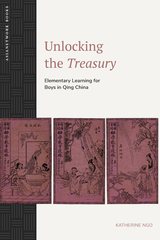
Unlocking the Treasury
Elementary Learning for Boys in Qing China
Katherine Ngo
Lever Press, 2025
In recent years, the renewed interest in traditional Chinese elementary educational material has led to an increased use of these texts as teaching materials in Chinese schools, as well as popular literature and in academic research. Unlocking the Treasury: Elementary Learning for Boys in Qing China seeks to address the existing gap in Western scholarship regarding pre-modern Chinese primary education, its theories, and textbooks. With a focus on the Qing dynasty textbook, Treasury of Elementary Learning (Youxue qionglin 幼學瓊林), this volume is the first major study of the Treasury in English and reveals a rich tradition of education through close and critical readings of the text.
Unlocking the Treasury grounds its study of primary education in the intellectual history of the period. Using the concept of interpretive communities, Katherine Ngo explores the impact of socio-political influences and differences in Qing schools of thought, including the school of principle, the school of heart-mind, and practical learning. As such, this volume examines the Treasury through three critical readings of the text: as a handbook for practical learning, a child-oriented reading of the school of heart-mind, and the instrumental perspective of education as examination training.
Ngo reframes the curricular content, skills, learning approaches, and teaching strategies of Chinese pre-modern elementary education with the goal of facilitating a broader transcultural dialogue in contemporary education. Far from the notion of traditional Chinese elementary education being monolithic and “rote learning,” Unlocking the Treasury reveals that elementary learning in the Qing dynasty offered a sophisticated and complex educational agenda with diverse learning goals of examination, preparation, moral development, and textual scholarship training that were shaped by intellectual trends of the time. An engaging text for scholars of Qing China and historians of education alike, Katherine Ngo’s Unlocking the Treasury is essential to understanding the philosophical, historical, literary, and psychological dimensions of education and educational theory in the Qing era.
Unlocking the Treasury grounds its study of primary education in the intellectual history of the period. Using the concept of interpretive communities, Katherine Ngo explores the impact of socio-political influences and differences in Qing schools of thought, including the school of principle, the school of heart-mind, and practical learning. As such, this volume examines the Treasury through three critical readings of the text: as a handbook for practical learning, a child-oriented reading of the school of heart-mind, and the instrumental perspective of education as examination training.
Ngo reframes the curricular content, skills, learning approaches, and teaching strategies of Chinese pre-modern elementary education with the goal of facilitating a broader transcultural dialogue in contemporary education. Far from the notion of traditional Chinese elementary education being monolithic and “rote learning,” Unlocking the Treasury reveals that elementary learning in the Qing dynasty offered a sophisticated and complex educational agenda with diverse learning goals of examination, preparation, moral development, and textual scholarship training that were shaped by intellectual trends of the time. An engaging text for scholars of Qing China and historians of education alike, Katherine Ngo’s Unlocking the Treasury is essential to understanding the philosophical, historical, literary, and psychological dimensions of education and educational theory in the Qing era.
[more]
READERS
Browse our collection.
PUBLISHERS
See BiblioVault's publisher services.
STUDENT SERVICES
Files for college accessibility offices.
UChicago Accessibility Resources
home | accessibility | search | about | contact us
BiblioVault ® 2001 - 2025
The University of Chicago Press


